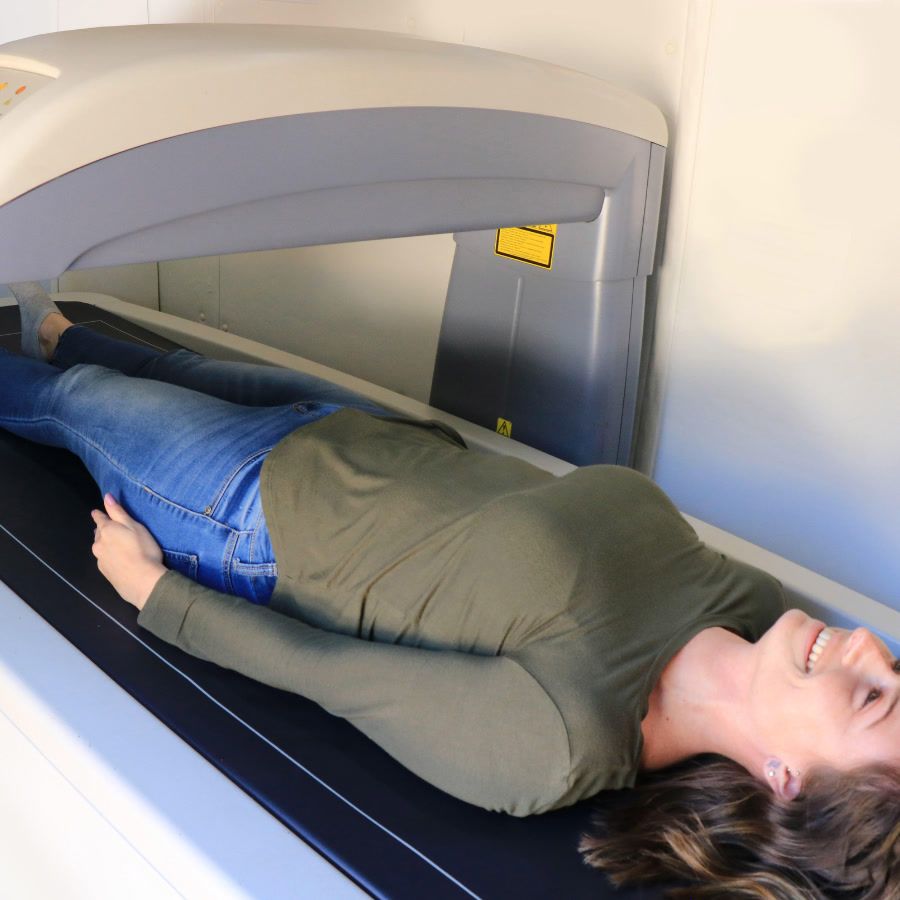The Complete Guide to Jiu Jitsu Belts
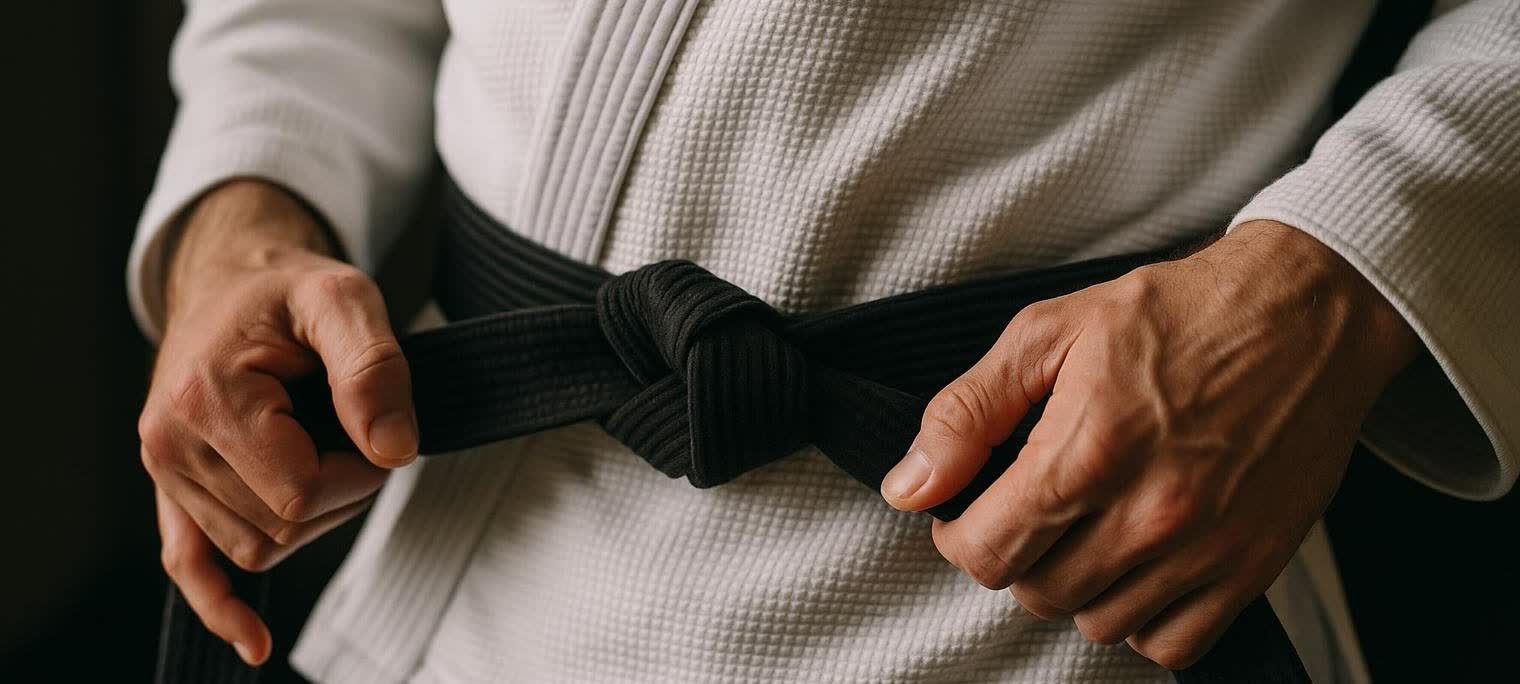
The Complete Guide to Jiu Jitsu Belts: Progression, Stripes, and Buying Tips
Blue, purple, brown, black—Brazilian Jiu Jitsu (BJJ) belts are more than colorful accessories. They’re a roadmap of your technical growth, mat hours, and personal discipline. Whether you’re a brand-new white belt, the parent of an eager eight-year-old, or a seasoned grappler shopping for a replacement belt, this guide breaks down everything you need to know.
Quick Navigation
- Understanding the BJJ Belt Hierarchy
- Adult Belt Progression Timeline
- Youth Belt Colors & Age Requirements
- How Stripes Work (and How to Apply Them)
- Buying Guide: Choosing an IBJJF-Compliant Belt
- FAQs
Understanding the BJJ Belt Hierarchy
Brazilian Jiu Jitsu follows a linear belt system that reflects technical knowledge, sparring ability, and—in some cases—competition success. While each academy sets its own promotion criteria, most follow guidelines published by the International Brazilian Jiu-Jitsu Federation (IBJJF).
Adult belt colors (age ≥ 16)
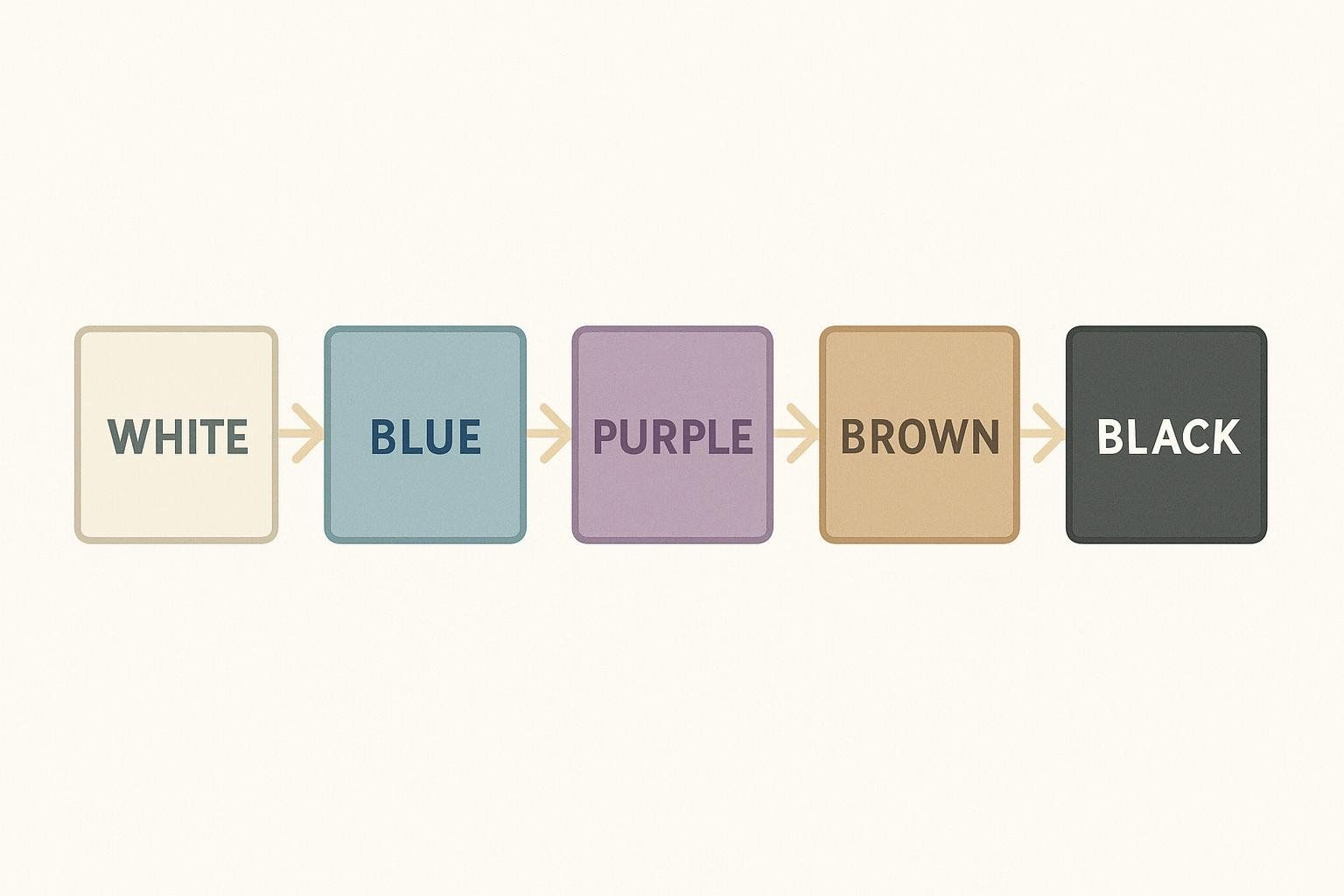
- White
- Blue
- Purple
- Brown
- Black (with six degrees, then coral & red belts for lifelong practitioners)
Youth belt colors (age 4–15)
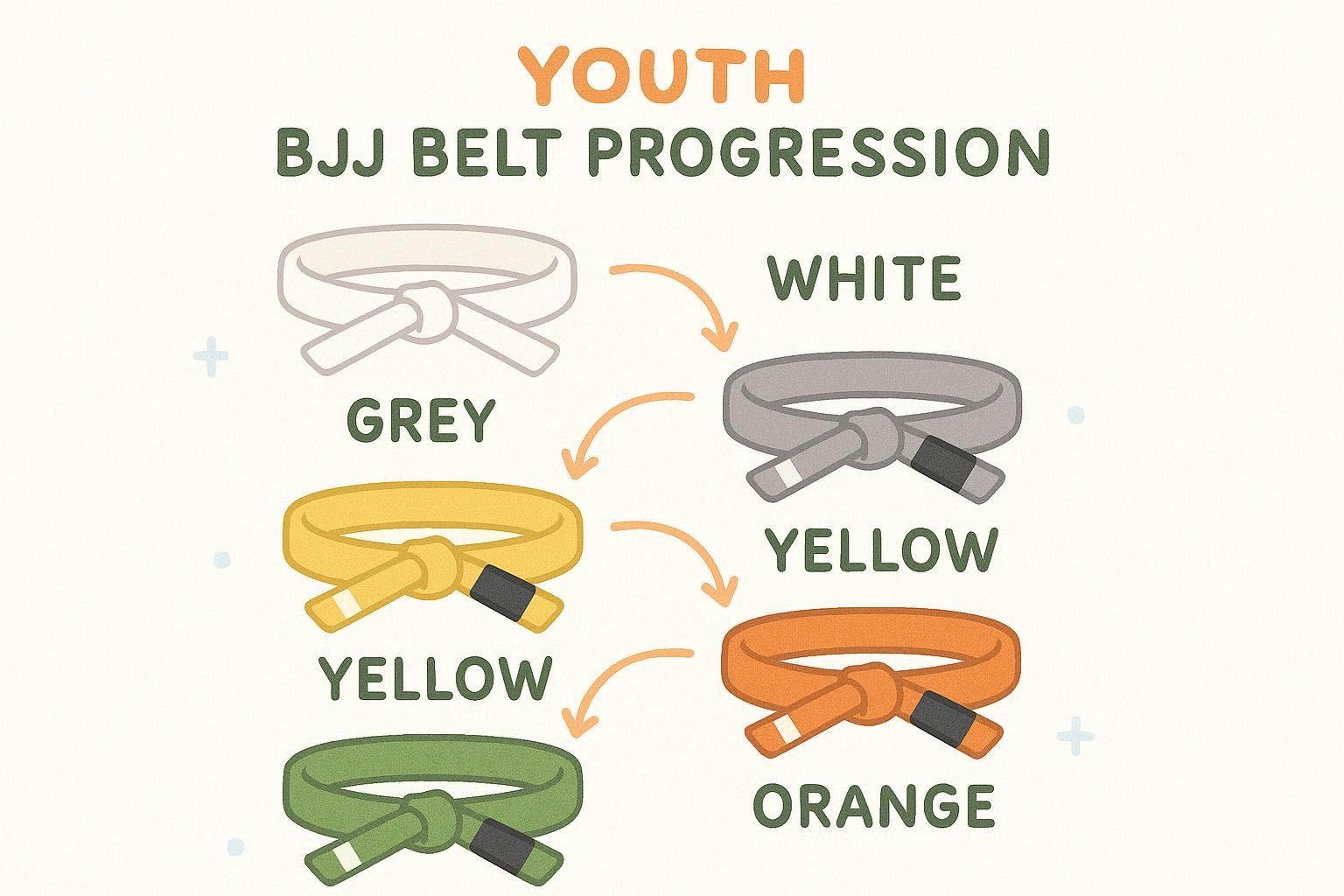
White → Grey → Yellow → Orange → Green
Between each solid color are white-, solid-, and black-border variants that create 13 youth ranks total. This keeps kids motivated with regular milestones while they develop motor skills and mat awareness.
Why no shortcuts? Because BJJ techniques rely on timing, leverage, and problem solving that only dedicated mat time and countless live-sparring reps can build.
Adult Belt Progression Timeline
How long does it actually take to move from one adult rank to the next? The table below combines IBJJF minimum time-in-grade rules with real-world averages reported by large academies (Gracie Barra, Alliance, Checkmat, Atos). Remember: these are guidelines—not guarantees. Your coach ultimately decides when you’re ready.
| Belt | Average Time at Rank | IBJJF Minimum Period* | Key Skill Benchmarks |
|---|---|---|---|
| White | 1–2 years | None | Survival fundamentals, closed-guard basics, hip escapes, positional escapes |
| Blue | 2 years | 2 years (updated 2023) | Guard retention, sweeps, two reliable submissions from top & bottom |
| Purple | 1.5 years | 1.5 years | Passing multiple guard styles, takedown chain, submission defense |
| Brown | 1–2 years | 1 year | Pressure passing, leg-lock awareness, advanced transitions |
| Black (1st degree) | — | 3 years to 2nd degree | Teaching ability, competition record, mentoring & assisting classes |
*Source: IBJJF minimum period update
Pro Tip: Track Your Mat Hours—Not Just Calendar Time
Two athletes who both train “for two years” can log wildly different sparring volumes. Many coaches promote once students hit ≈ 400–600 live-roll hours per belt. Use a training log or fitness app to keep yourself honest.
If you’re strength-training alongside BJJ, periodic DEXA scans can confirm muscle gain without excess fat. See BodySpec’s guide on How to Build Lean Muscle for evidence-based programming tips.
Youth Belt Colors & Age Requirements
Kids develop coordination and focus faster when they earn small, frequent rewards. That’s why the youth ranking system offers more colors and stripe levels. IBJJF specifies age brackets for each color:
| Age | Eligible Belt Colors |
|---|---|
| 4–5 | White, Grey/White |
| 6–7 | Grey (solid), Grey/Black |
| 8–9 | Yellow/White, Yellow, Yellow/Black |
| 10–11 | Orange/White, Orange, Orange/Black |
| 12–13 | Green/White, Green, Green/Black |
| 14–15 | Green (all variants) → then Blue at age 16 |
Many large academies—such as Easton Training Center—ask children to spend at least 6 months per stripe and roughly one year per belt to ensure fundamentals mature along with growing bodies Easton BJJ Kids Belt Guide. Your child’s coach may adjust these intervals based on attitude, attendance, and safety.
How Stripes Work (and How to Apply Them)
Most academies award 4 stripes between belts. Each stripe represents incremental mastery—think of them as quarterly performance reviews. Requirements vary, but coaches commonly look for:
- Consistent attendance—often ~20–30 classes since the last stripe.
- Technical demonstrations—showing 3–5 new techniques under moderate pressure.
- Positive mat behavior—etiquette, helping newer students, and overall attitude.
- Competition results (optional)—placing at local events can accelerate advancement, but it’s rarely mandatory.
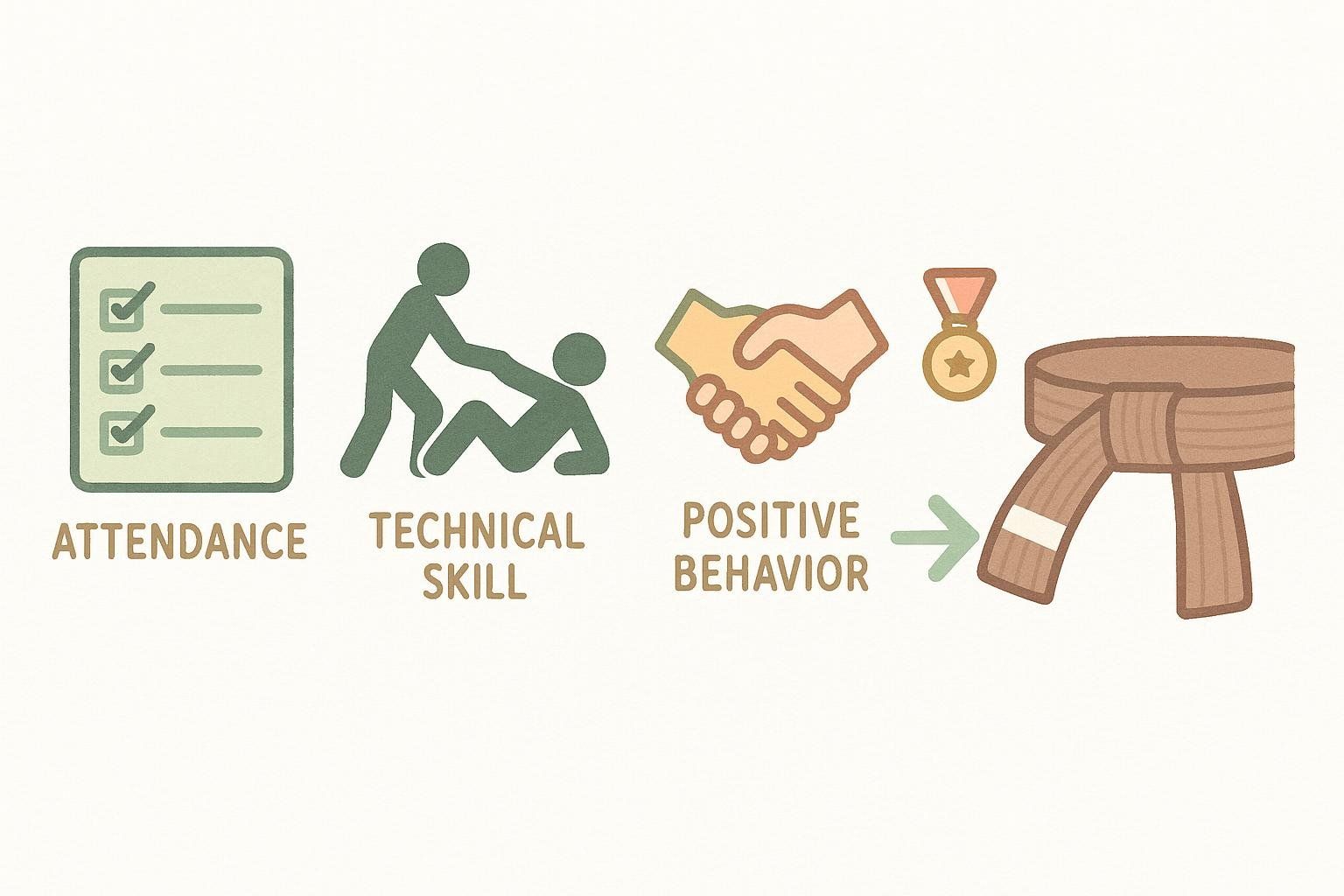
DIY Stripe Application (Step-by-Step)
Stripes are typically ⅜-inch athletic tape wrapped around the belt’s black bar.
- Clean the belt end with rubbing alcohol; let it dry.
- Measure one belt-width from the last stripe (or belt tip for the first).
- Wrap tape around twice, overlapping ends on the back.
- Press firmly to secure; trim excess.
Replace frayed tape to keep your belt looking sharp for competition.
If you’re chasing that next stripe, a quick BodySpec DEXA scan can verify you’re adding functional muscle—so your conditioning keeps pace with your technical growth.
Buying Guide: Choosing an IBJJF-Compliant Belt
A good BJJ belt should be durable, sized correctly, and fully compliant with competition rules.
Belt Size Chart
| Adult Size | Typical Waist Range | Approx. Length |
|---|---|---|
| A0 | 26–30 in | 101 in |
| A1 | 28–32 in | 104 in |
| A2 | 31–34 in | 110 in |
| A3 | 33–36 in | 117 in |
| A4 | 35–38 in | 121 in |
| A5 | 37–40 in | 138 in |
| A6 | 39–44 in | 158 in |
Based on manufacturer charts from Fuji Sports and Gameness.
Always measure the belt you currently tie comfortably and pick the closest length—many athletes size up if they prefer longer belt tails for double-wrap security.
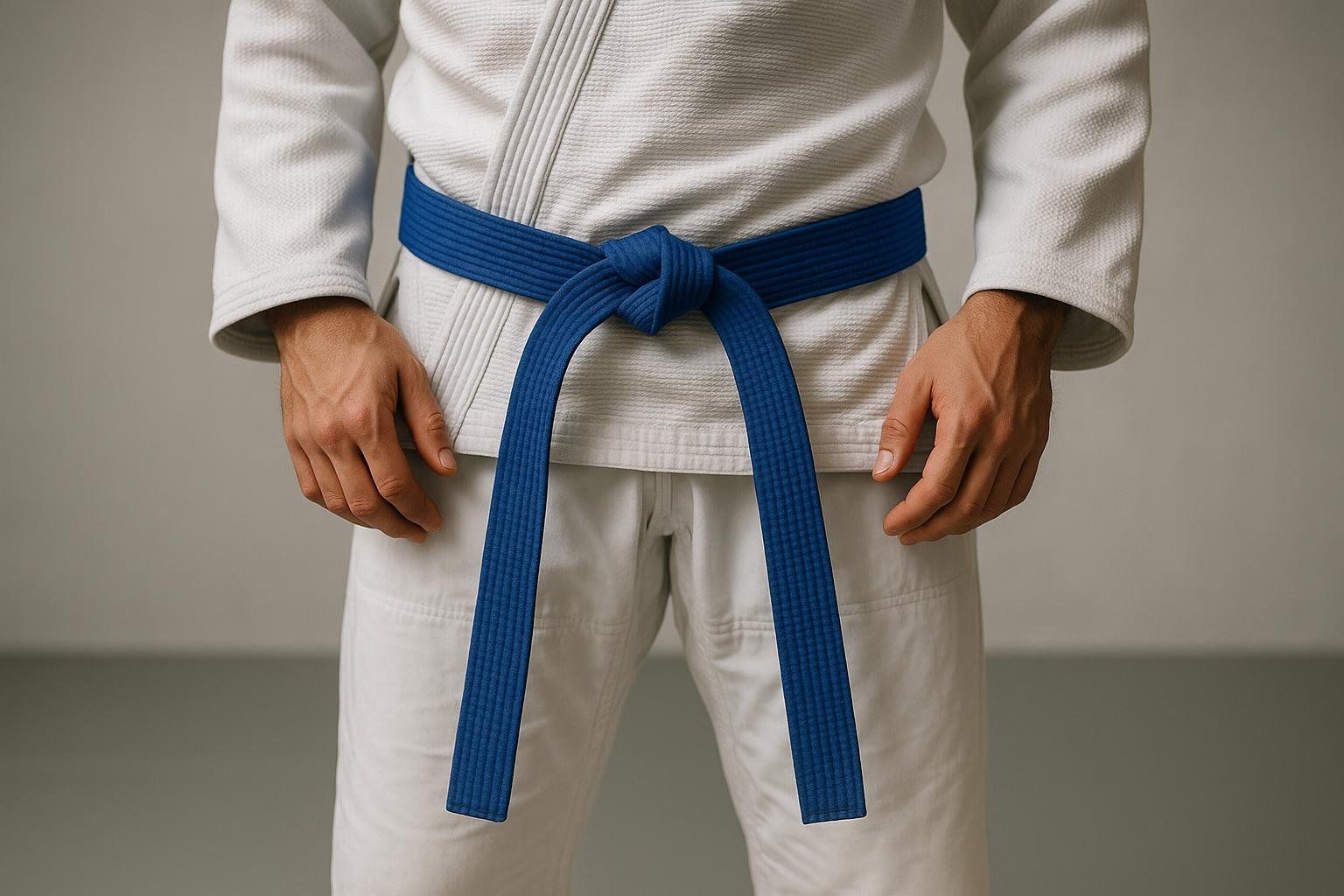
IBJJF Legal Requirements
• Color: Solid rank color with a black bar (red bar for black belts).
• Width: 4–5 cm (1.5–2 in).
• Rank Bar: ~10 cm long, located at one end of the belt (black for colored belts, red for black belts).
• No patches on the belt itself; academy logos belong on the gi.
Cotton vs. Pearl-Weave Belts
• Standard Cotton: Softer, breaks in quickly but may fade faster.
• Pearl-Weave / Ripstop: Stiffer, resists fraying, stays tighter when wet—great for competition weigh-ins.
Belt Care Tips
- Wash occasionally (cold water, gentle cycle) to remove sweat bacteria—color-safe detergent only.
- Air dry; high heat shrinks cotton.
- If you never wash your belt, at least sun-dry it after class to kill odor-causing microbes.
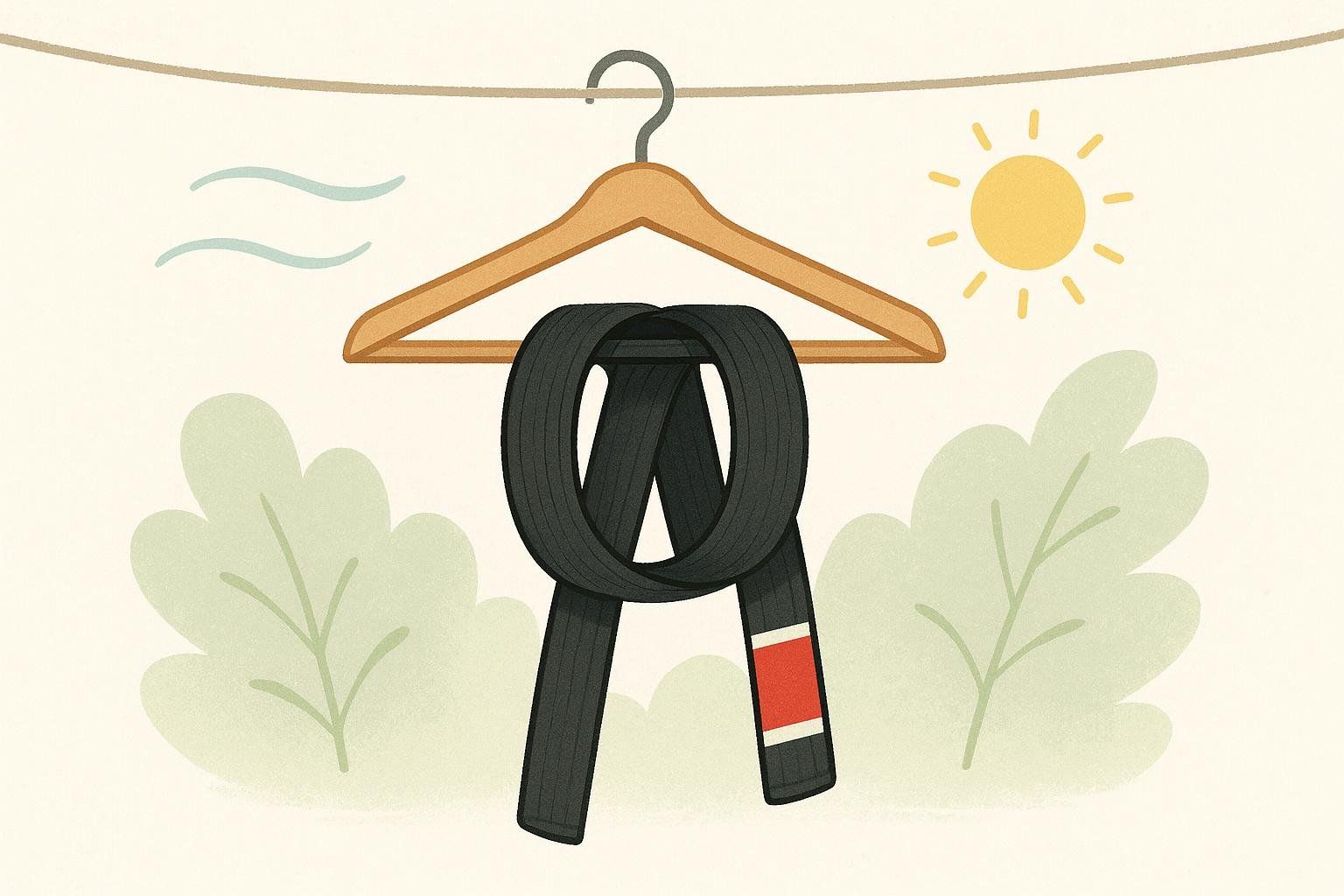
FAQs
How many belts are there in BJJ?
Five core adult belts—white, blue, purple, brown, black—followed by six black-belt degrees, then coral and red belts for masters.
Can you skip belts?
Rarely. Even elite wrestlers or judo black belts usually receive each belt in order to respect tradition and tracking.
What’s the fastest someone earned a black belt?
BJ Penn reportedly reached black belt in ≈3 years before winning the 2000 World Championship Wikipedia.
Do stripes matter in competition divisions?
No. Tournaments group by belt color, weight, and age—not stripe count.
Should I buy a different belt for competition?
Many competitors keep a “comp belt” that’s newer (tighter), the correct length, and free of frayed stripes. Wash it before weigh-ins to avoid extra weight from sweat.
Key Takeaways
• Adult promotions balance time-in-rank and mat hours; expect 8–12 years to black belt.
• Youth belts change more often to match developmental stages; follow color-age guidelines.
• Stripes are incremental goals—track classes and technical milestones.
• Choose an IBJJF-legal belt sized for your waist, wash it occasionally, and replace stripe tape as needed.
Ready to benchmark your strength gains as you climb the ranks? Book a BodySpec DEXA scan today to quantify muscle growth and the fat you’re leaving behind on the mats.


